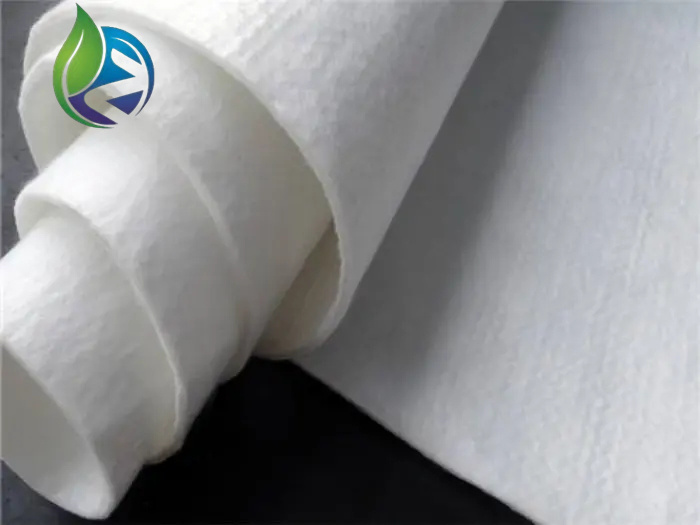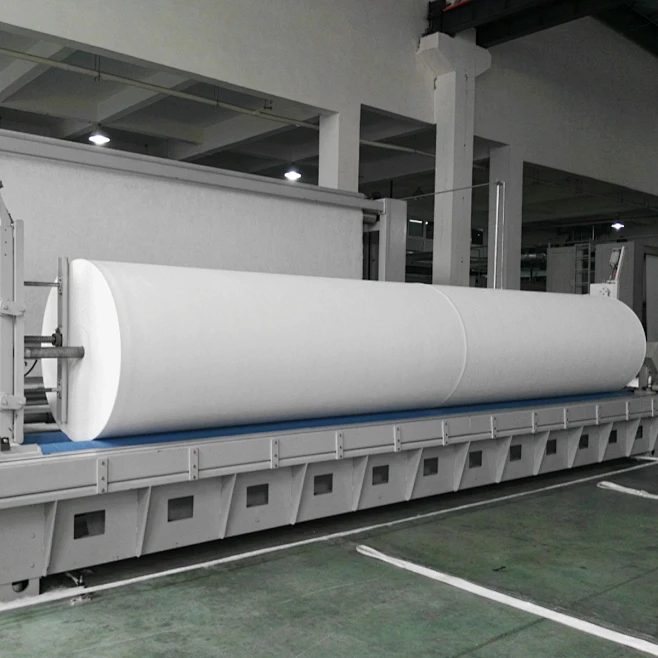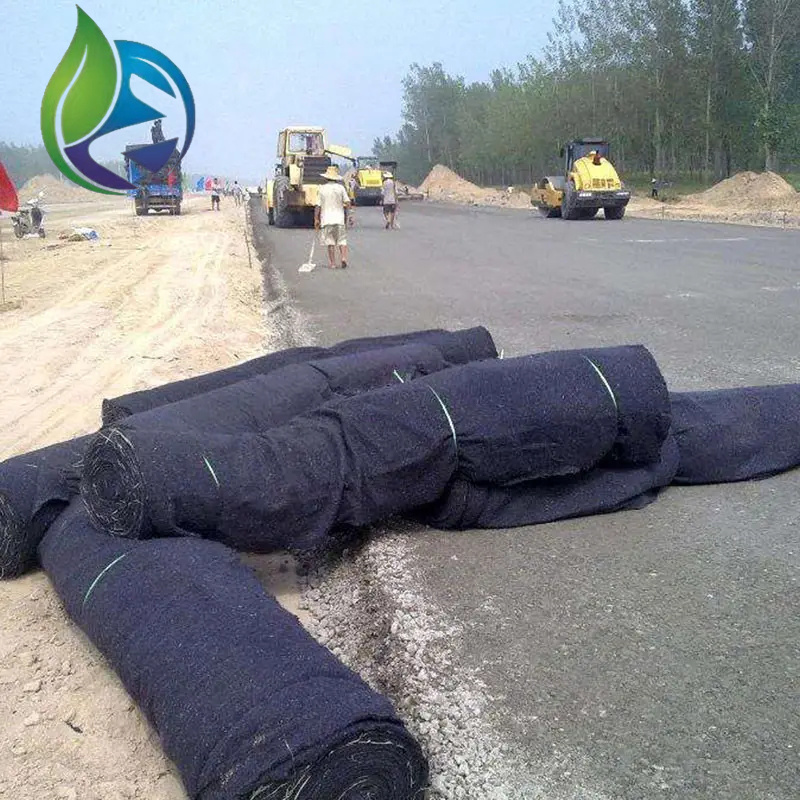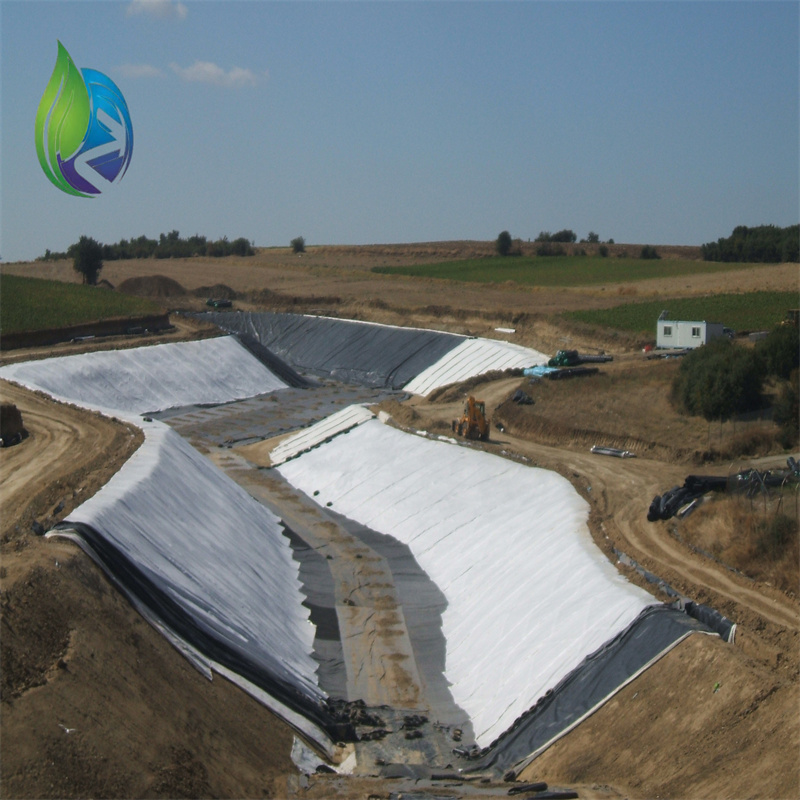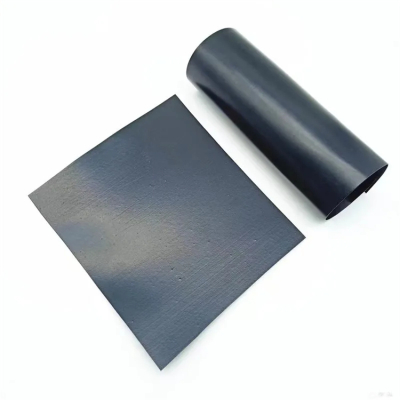Geotextile: Product Introduction and Key Advantages in Civil Engineering
1. Definition and Material Composition of Geotextile
Geotextile is a permeable synthetic cloth used in civil engineering and constructing duties to beautify soil stability, filter water, and enhance structures. It is commonly made from polymers such as polypropylene(PP), polyester (PET), polyethylene (PE), or nylon, which are processed into flexible, lengthy lasting sheets. The manufacturing machine entails spinning polymer fibers into yarns, which are then woven, non-woven, or knitted to shape the closing fabric. Woven geotextiles are created street interlacing two devices of yarns at ideal angles,ensuing in a strong, consistent form with managed porosity. Non-woven geotextiles, on the special hand, are made by way of capacity of bonding fibers mutually through heat, chemicals, or mechanical processes,forming a fluffy, porous material. Knitted geotextiles,though plenty much less common, furnish immoderate elasticity and are used in features requiring flexibility.Each fabric sort brings different properties: polypropylene geotextiles excel in chemical resistance, polyester variants grant pinnacle of the line electrical energy and UV resistance, at the same time as polyethylene options grant right moisture resistance. This range approves Geotextile to be tailored to specific challenge needs, from avenue improvement to environmental remediation.
2. Manufacturing Processes Shaping Geotextile Characteristics
The manufacturing technique at once influences the standard overall performance of Geotextile,discovering out its strength, porosity, and durability. For woven geotextiles, the weaving technique controls the fabric’s tensile strength and pore size. High-tensile woven kinds use thick yarns and tight weaves, making them best for reinforcement applications, even as lighter weaves with giant pores are designed for filtration. Non-woven geotextiles are produced the utilization of three vital methods: needle-punching, thermal bonding, and chemical bonding. Needle-punching consists of routinely interlocking fibers with barbed needles, growing a durable, porous fabric terrific for drainage. Thermal bonding makes use of warmness to fuse fibers at their contact points,ensuing in a smoother, greater uniform material with consistent filtration properties. Chemical bonding employs adhesives to bind fibers, producing geotextiles with immoderate flexibility and low weight.Quality manipulate is rigorous all thru production. Manufacturers take a appear at for tensile strength, elongation, permeability,and resistance to UV radiation and chemicals. These assessments make sure that Geotextile meets international standards, such as these set by using way of ASTM and ISO, guaranteeing reliability in real-world applications.
3. Primary Functions of Geotextile in Civil Engineering
Geotextile serves four core aspects in civil engineering: separation, filtration, reinforcement, and drainage. Separation is quintessential in avenue construction, the area geotextile placed between wonderful soil layers prevents mixing of granular and top notch soils. This continues the integrity of the avenue base, lowering protection desires and extending lifespan. Filtration consists of allowing water to pass through at the same time as conserving soil particles, stopping clogging in drainage systems. In maintaining partitions and embankments, Geotextile acts as a filter, making certain water drains freely without washing away backfill material. This characteristic is crucial in stopping hydrostatic pressure buildup, which can damage structures.Reinforcement leverages the tensile strength of geotextile to beautify soil stability. When located in prone soils, it distributes thousands at some point of a wider area,developing bearing capacity. This is primarily advisable in setting up foundations, slopes, and embankments in clean ground conditions. Drainage refers to the geotextile’s ability to acquire and lift water away from structures. In sports activities things to do fields, for example, non-woven geotextile paired with gravel layers helps rapid water removal, stopping waterlogging and making positive impervious play. Each characteristic highlights why Geotextile is imperative in modern construction.
4. Product Advantages:
Cost-Effectiveness of GeotextileOne of the key advantages of Geotextile is its cost-effectiveness in distinction to normal constructing materials. Traditional methods, such as the use of granular filters or concrete, are regularly greater luxurious and time-consuming.Geotextile reduces cloth prices through the usage of minimizing the favor for aggregates, and its lightweight nature lowers transportation and set up expenses. In road construction, the utilization of geotextile can restrict the thickness of the avenue base by means of up to 30%,reducing combination utilization and lowering standard mission costs. A case discover out about of a rural avenue mission tested that incorporating woven geotextile lowered lifecycle costs with the aid of 25% over 10 years, thanks to fewer repairs and longer intervals between resurfacing.
Additionally, Geotextile hurries up improvement timelines. Its ease of installation—requiring minimal heavy machinery—allows initiatives to be carried out faster, reducing labor prices and enabling to now assignment commissioning. This combination of reduce upfront and long-term fees makes it a wise funding for budget-conscious projects.
5. Product Advantages:
Durability and Longevity of GeotextileGeotextile is renowned for its durability, withstanding harsh environmental stipulations and maintaining universal overall performance over decades. UV-resistant factors in polypropylene and polyester geotextiles stop degradation from sunlight, making certain sturdiness in uncovered functions such as coastal protection and landfill covers.Chemical resistance is any different strength. Geotextile made from polypropylene resists acids, alkalis, and herbal solvents, making it suitable for industrial internet web sites and wastewater remedy facilities. In agricultural applications, it withstands publicity to fertilizers and pesticides without deteriorating. Mechanical sturdiness ensures that Geotextile can deal with set up stress and ongoing loads. Tear and puncture resistance quit damage all road placement, even as immoderate tensile strength lets in it to face up to the forces exerted by using skill of soil and water over time. Field information suggests that pinnacle set up Geotextile can continue to be wonderful for 20–50 years, relying on the material and application, outperforming many frequent alternatives.
6. Application in Road and Railway Construction
Geotextile performs a essential function in avenue and railway construction, bettering the stability and sturdiness of infrastructure. In road bases, woven geotextile separates the subgrade from the combination layer, stopping mixing that would weaken the structure. This reduces rutting and cracking, extending the road’s issuer life. Railway duties use Geotextile to make more suitable ballast layers, reducing settlement and improving song stability. By distributing train hundreds increased evenly, it minimizes ballast degradation, lowering safety frequency. A high-speed railway project in Europe cautioned a 40% cut price in tune renovation after placing in polyester geotextile, demonstrating its effectiveness. In every applications, the drainage attribute of geotextile is critical. It approves water to drain from the base layers,stopping moisture buildup that can weaken soil and cause structural failure. This is in specific integral in areas with heavy rainfall or immoderate groundwater tables.
7. Application in Environmental and Hydraulic Engineering
Geotextile is widely used in environmental and hydraulic engineering for erosion control, landfill liners, and wetland restoration. Erosion manipulate blankets,made from biodegradable or synthetic geotextile, protect soil on slopes and riverbanks from water and wind erosion. They promote vegetation growth by preserving moisture and soil, growing a natural, sustainable solution. Landfills make use of non-woven geotextile as section of composite liner systems, the vicinity it protects the impermeable geomembrane from punctures and helps leachate drainage. Geotextile moreover acts as a filter in landfill caps, stopping rainwater from infiltrating waste even as enabling fuel to escape. In hydraulic engineering, Geotextile traces canals, reservoirs, and coastal constructions to end soil erosion. It reinforces embankments and dikes, developing their resistance to wave action and flooding. In wetland restoration, it helps stabilize soil, developing a excellent environment for plant growth and herbal world habitat.
8. Choosing the Right Geotextile:
Factors and ConsiderationsSelecting the extraordinary Geotextile depends upon on mission requirements, consisting of soil type, load conditions, and environmental factors. For separation and reinforcement in heavy-load functions like industrial pavements, woven polypropylene or polyester geotextiles with immoderate tensile electrical energy are preferred. Filtration and drainage projects, such as sports activities things to do fields or drainage trenches, require non-woven geotextiles with managed porosity to steadiness water drift and soil retention. In corrosive environments, such as industrial internet web sites or coastal areas, chemical-resistant polypropylene geotextile is ideal. UV resistance is vital for uncovered applications, making polyester geotextile a greater choice than polypropylene in sunny regions. For quick projects, biodegradable geotextiles grant an eco- friendly option, as they injury down over time, reducing waste. Consulting with geotextile producers and engineers ensures that the chosen product matches the project’s special needs, maximizing common overall performance and cost-effectiveness. This tailored technique highlights why Geotextile stays a versatile and essential cloth in civil engineering.

